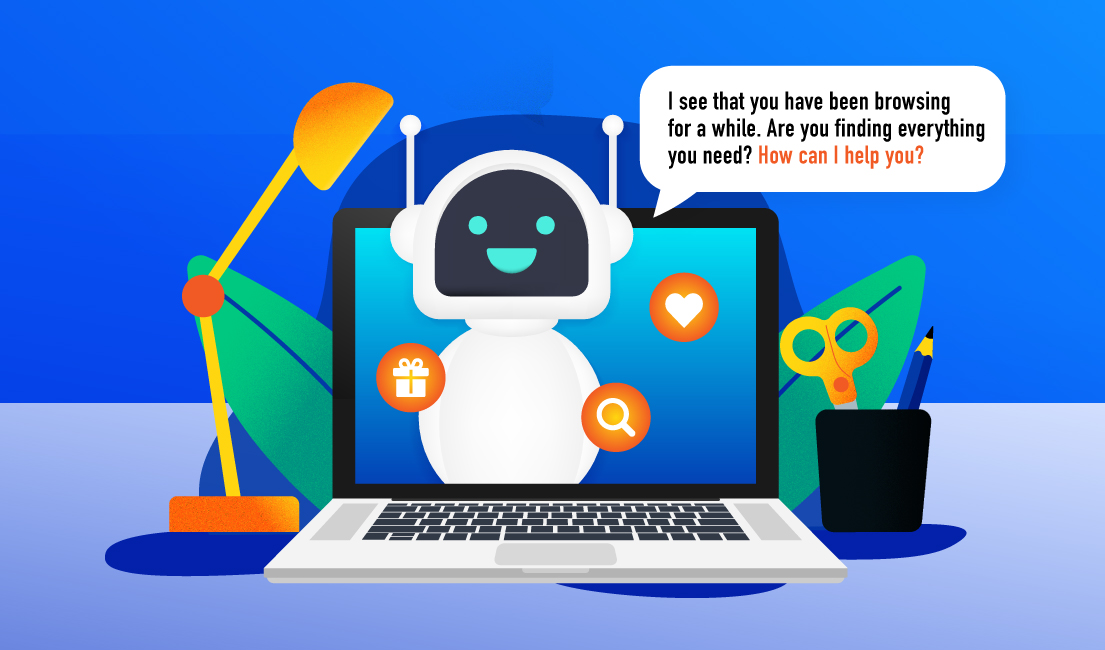4 min read
Exit-intent technology is a highly-underused tool. However, when implemented effectively, it can encourage visitors who would have otherwise abandoned your site to stay and even to convert. So, what is exit-intent technology? When should you use it? How to make it work for your brand? Read on.
What Is Exit-Intent Technology?
Exit-intent technology is smart behavioral software that tracks online visitors’ mouse movements on a webpage. The purpose of exit-intent technology is to help marketers detect when a visitor is going to leave a site without making a purchase.
Every exit-intent provider uses different algorithms and technology and responds to different types of visitor mouse activity. Movements that indicate abandonment include when the cursor moves towards the back button, remains idle, or scrolls up quickly.
When signs of abandonment or customer intent such as these are identified, exit-intent technology automatically delivers a pop-up message that engages visitors with an enticing offer, product recommendation, or other messages to encourage them to stay and convert.
When Should Marketers Use Exit-intent Technology?
Exit-intent technology works well on e-commerce websites, landing pages, and commercial websites. Marketers should use exit-intent technology if they are looking to capture more potential customers, reduce cart adornment, and maximize customer lifetime value.
Because exit-intent pop-ups capture visitor attention when they are already engaged and in a mindset to buy, they can be extremely effective in boosting conversion rates. In fact, exit-intent pop-ups have been shown to increase conversions by up to 46 percent.
Not only can exit-intent technology drive conversions, but it is also easy and low-cost to set up, and only needs occasional monitoring.
10 Effective Exit-Intent Pop-up Hacks
There are many best practices you can use to ensure your exit-intent pop-ups drive conversions. Here are some that can significantly boost their effectiveness:
1. Make your pop-ups personal
Personalizing your exit-intent pop-ups can make a huge difference in how effective they are. As well as including a person’s name, segment and tailor your messages and offers by other criteria, such as interest, traffic source, device type, returning visitor, new visitor, day of the week and total cart value.
2. Offer an appealing discount
Adding a discount to your exit-intent pop-up is a great way to get paying customers over the line. However, rather than go with a blanket discount, tailor your discount to your audience. For example, offer a 25 percent discount to new customers and a 10 percent discount to existing customers who spend over a certain amount.
3. Overcome key objections
Overcoming objections can work particularly well on product and checkout pages. To start, think about the types of objections your customers might have. For example, perhaps they are unsure of the quality or can’t afford it. In these cases, your message could be a 30-day money-back guarantee or a monthly payment plan.
4. Suggest related products
Sometimes a visitor may simply decide a product isn’t quite right, even after they have added it to their cart. By suggesting similar or related products in these instances, the person may see a product that better fits the bill and decide to purchase that instead.
5. Suggest popular products
Social proof is a potent tool in driving more conversions. By recommending some of your most popular products on your exit-intent pop-ups, you remind visitors of what other people love from your brand. It can also help keep them on your site for longer.
6. Consider your pop-up design
How your pop-up looks and reads can play a big part in whether people positively act on it. The most effective pop-up designs use minimal text and fields, easy to read fonts, contrasting colors, and enticing call-to-actions (CTAs). Adding images and graphics can also boost engagement and make them more relatable.
7. Offer free shipping
Delivery costs can be a huge barrier to purchase, so using exit-intent pop-ups that promote free shipping can be a great way to push people to purchase. Statistics show that by offering free shipping in your exit-intent pop-ups, you can recover 44 percent of shoppers who abandon carts.
8. Add urgency or scarcity
FOMO, or the fear of missing out, is a psychological trigger people can’t help but respond to. Because of this, by using features such as a countdown timer in your exit-intent pop-up offer, you can prompt them to act. Scarcity can have the same effect, for example, by saying, “Don’t miss out – only six items left!”.
9. Offer an opportunity to chat
Another common cause of abandonment is that a person simply doesn’t have all the information they need at that point to make an informed decision. By using your exit-intent pop-up as an opportunity to start a conversation – for example, providing access to a live chat feature – you can answer all their questions.
10. Be sure to A/B test
While exit-intent technology is time and resource-light, it is good to carry out regular A/B testing to check whether your messages and offers are working. A/B testing involves splitting your web visitors into two groups and using a different version of your pop-up to see which gets more conversions.
Exit-intent technology can be a great way to pull those abandoning customers back to purchase. However, don’t expect massive returns from using exit-intent pop-ups alone. Make sure you are combining them with other tools and tactics for best results.
* Do you want to drive more site visitor conversions? Get in touch with our team to find out more about our AI-driven solutions.



